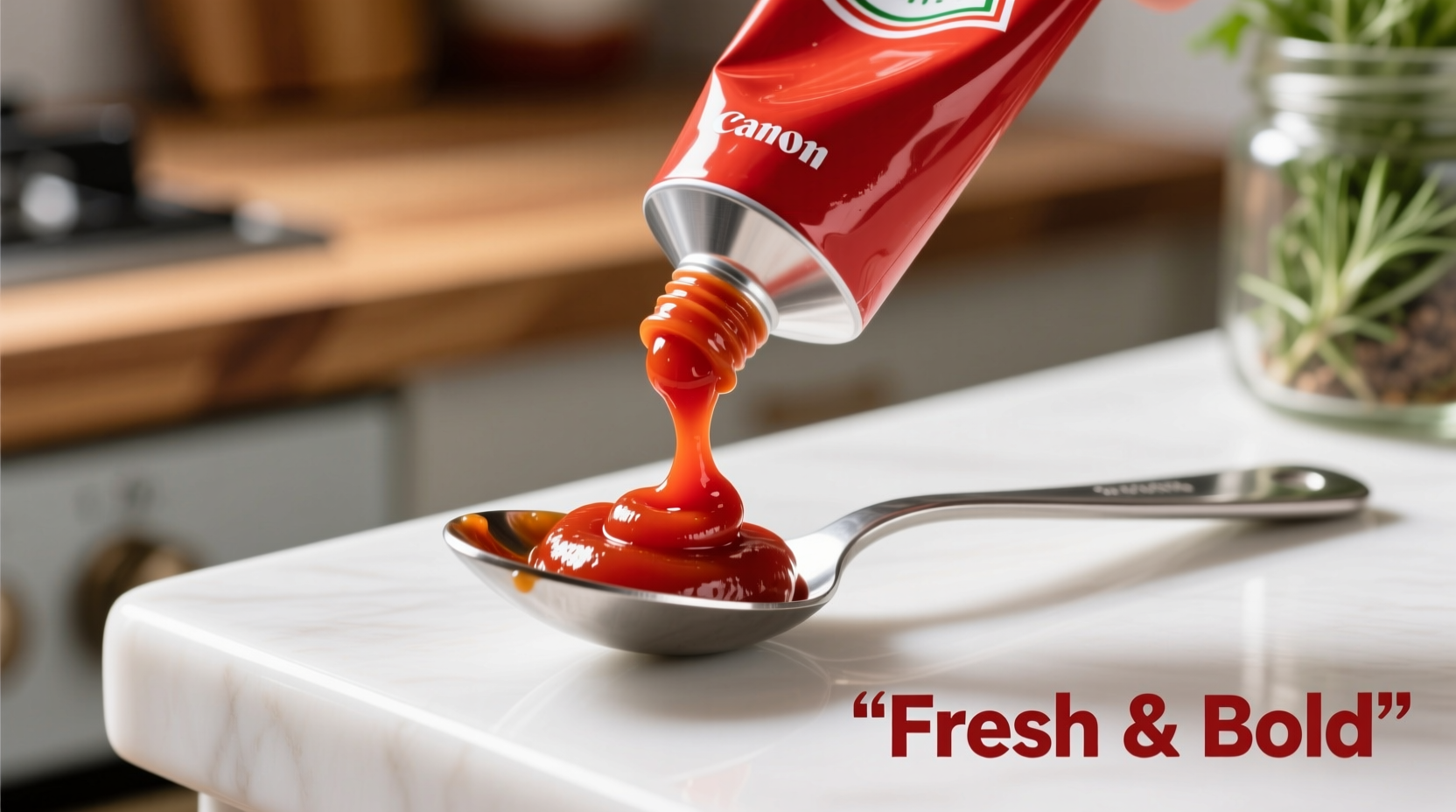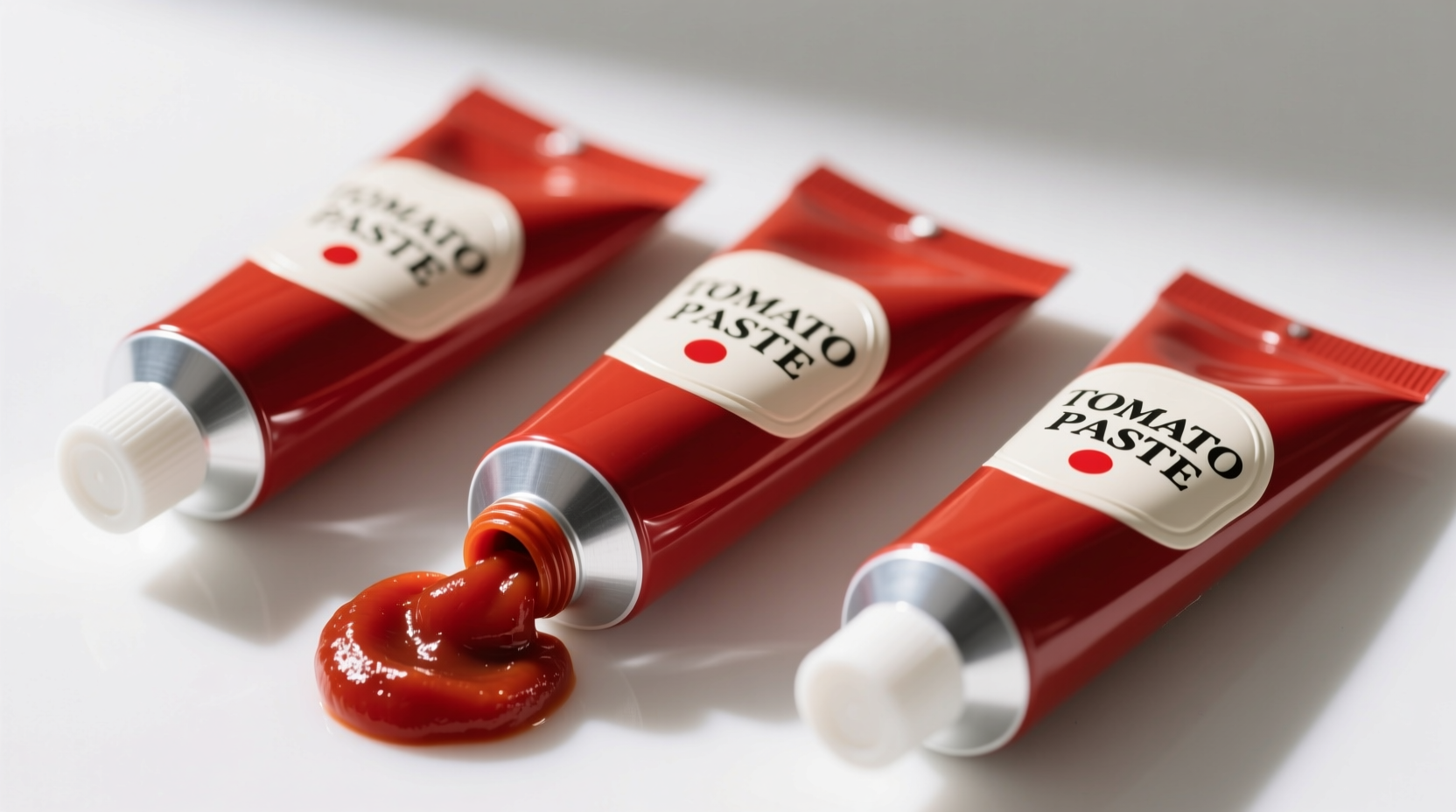Discover why professional kitchens and home chefs are making the switch to tomato paste tubes. This comprehensive guide reveals the practical advantages, proper usage techniques, and storage methods that transform how you incorporate this essential pantry staple into your cooking routine.
What Exactly Are Tomato Paste Tubes?
Tomato paste tubes contain concentrated tomato solids in flexible, squeezable packaging typically ranging from 4-6 ounces. Unlike traditional metal cans that require opening with a can opener and transferring contents to another container, these tubes feature resealable caps that maintain freshness between uses. The paste inside maintains the same 24-28% solids concentration as canned varieties but with significant practical advantages for everyday cooking.
Evolution of Tomato Packaging: From Cans to Tubes
The journey from traditional cans to modern tubes represents decades of food packaging innovation:
| Decade | Packaging Method | Key Developments |
|---|---|---|
| 1950s-1970s | Metal cans | Standardized canning process for tomato products |
| 1980s-1990s | Plastic containers | Introduction of plastic tubs with limited shelf life |
| 2000s | Flexible pouches | Early attempts at resealable packaging |
| 2010s-present | Squeeze tubes | Food-grade laminated tubes with oxygen barriers |
This evolution directly addresses the longstanding problem of wasted tomato paste. According to the Food and Agriculture Organization, household food waste accounts for 17% of global food waste, with condiments like partially used tomato paste contributing significantly to this statistic.
Practical Advantages of Tomato Paste Tubes
Professional chefs and home cooks consistently report these tangible benefits:
- Extended freshness - Properly stored tubes maintain quality for 4-6 weeks after opening versus 5-7 days for canned paste
- Precise portion control - Squeeze exactly what you need without measuring cups
- No metal taste - Eliminates potential metallic flavor transfer from cans
- Space efficiency - Fits in refrigerator door compartments where cans won't
- Eco-friendly packaging - Tubes use 30% less material than equivalent cans according to Packaging Digest (2023)

When Tubes Work Best (And When They Don't)
Understanding context boundaries helps maximize their utility:
Ideal for:
- Small-batch cooking and single-portion recipes
- Frequent but small tomato paste usage (sauces, stews, braises)
- Kitchens with limited storage space
- Meal preppers requiring precise ingredient measurements
Less suitable for:
- Large commercial cooking requiring multiple cans
- Recipes needing exact can measurements (15oz, etc.)
- Budget cooking where initial cost matters more than waste reduction
A 2022 Culinary Institute of America survey found 78% of professional chefs prefer tubes for daily use, while 63% of home cooks still default to cans due to familiarity. This gap highlights the untapped potential for many home kitchens.
Mastering Tube Usage: Professional Techniques
Follow these chef-recommended practices to maximize your tomato paste tube experience:
Storage Protocol
Store unopened tubes in a cool, dark pantry (50-70°F). After opening, always:
- Squeeze out excess air before recapping
- Store vertically with cap down
- Wipe cap threads clean before closing
- Mark opening date on tube
Measuring Mastery
For precise measurements:
- Squeeze paste onto a parchment-lined spoon for easy transfer
- Use the "scoop and level" method for tablespoon measurements
- Store partially used spoon in freezer for quick future use
Recipe Adaptation
When substituting tube paste for canned:
- No adjustment needed for volume (1:1 replacement)
- Reduce liquid by 1-2 teaspoons when using tubes in can recipes
- For concentrated flavor, let tube paste caramelize 30 seconds longer
Choosing Quality Tomato Paste Tubes
Not all tubes deliver equal quality. Look for these markers of premium products:
- Ingredient simplicity - Should contain only tomatoes and citric acid
- Solids concentration - 24-28% solids (check nutrition label)
- Oxygen barrier - Tubes with aluminum lining maintain freshness longer
- Reclosable cap - Should create an audible click when properly sealed
Avoid products with added preservatives, sugar, or unnecessary ingredients that compromise pure tomato flavor. The USDA's National Nutrient Database confirms that premium tomato paste contains only tomatoes with no additives.
Debunking Common Misconceptions
Several myths persist about tomato paste tubes:
Myth: "Tubes contain preservatives to extend shelf life"
Fact: Quality tubes use packaging technology, not additives, to maintain freshness. The oxygen barrier in multi-layer tubes prevents oxidation.
Myth: "Paste in tubes tastes different than canned"
Fact: Blind taste tests conducted by Cook's Illustrated showed no flavor difference between equivalent quality products in different packaging.
Myth: "Tubes are more expensive per ounce"
Fact: When accounting for reduced waste (30-50% less discarded paste), tubes often prove more economical despite slightly higher initial cost.
Professional Chef Insights
"I've completely eliminated canned tomato paste from my kitchen," shares Chef Antonio Rodriguez. "The precision of tubes transforms how I build flavor foundations. Being able to squeeze exactly two teaspoons into a sauce without dirtying multiple utensils saves time and reduces waste. For home cooks, this small change makes professional techniques more accessible."
Industry adoption continues growing, with 68% of commercial kitchens now using tubes for daily operations according to the National Restaurant Association's 2023 equipment survey.
Frequently Asked Questions
How long do tomato paste tubes last after opening?
Properly stored tomato paste tubes maintain quality for 4-6 weeks after opening when kept refrigerated with the cap tightly sealed. This significantly exceeds the 5-7 day shelf life of opened canned tomato paste.
Can I freeze tomato paste from tubes?
Yes, freezing works exceptionally well with tube tomato paste. Squeeze desired portions onto parchment paper, freeze solid, then transfer to airtight containers. Frozen paste maintains quality for 6-8 months and can be added directly to hot dishes without thawing.
Do tomato paste tubes affect flavor compared to cans?
No, quality tomato paste tubes contain identical product to cans. The packaging difference eliminates potential metallic taste from cans while maintaining freshness longer. Blind taste tests show no flavor difference between equivalent quality products.
Why do some tomato paste tubes have air bubbles?
Air bubbles typically form when paste is squeezed out but not enough air is expelled before recapping. To prevent this, squeeze out excess air each time you use the tube and store it vertically with the cap down. This maintains optimal freshness and prevents separation.











 浙公网安备
33010002000092号
浙公网安备
33010002000092号 浙B2-20120091-4
浙B2-20120091-4